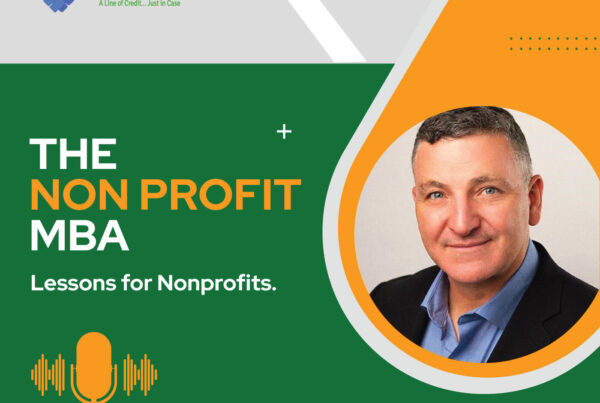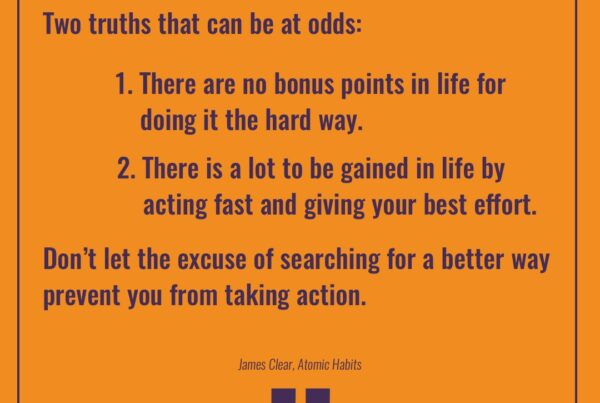“I have no time for fundraising.” If you have a tiny but mighty staff or are founder of your startup nonprofit you’ve likely thought or said these words.
I get it. It’s not that you don’t want to invite people to support the organization you are passionate about. It’s maybe that you:
- Don’t know what to do say to get people excited to make a contribution.
- Have had less than stellar results with mailings or in-person attempts you’ve already made.
- You truly don’t feel comfortable talking about money. You’d rather, as someone shared with me recently, “peel your skin off than ask someone for a contribution.”
So what to do?
FIRST
Understand that fundraising (and its sibling communication & marketing) are one of the four key components to your growth and success.

Years ago, when I worked “in the trenches” I was executive director and development director for three small, start-up nonprofits.
Because I was the only staff I had to stay focused. I used the image of four legs of a table to help me, our board, community partners, volunteers and potential donors understand how to spend our time.
LEG 1: Programs & Services
No matter what type of organization you are there are end users of your work. You may even deliver one or more programs.
 Maybe your organization organizes testimony at the state or federal level to advocate for funding or new laws? Maybe you manage the process for child or pet adoptions? Perhaps you conduct research to share with other nonprofits? Or you provide a safe place for women, children, vets, or frail elderly? Or you are one of the many other important nonprofits in your community.
Maybe your organization organizes testimony at the state or federal level to advocate for funding or new laws? Maybe you manage the process for child or pet adoptions? Perhaps you conduct research to share with other nonprofits? Or you provide a safe place for women, children, vets, or frail elderly? Or you are one of the many other important nonprofits in your community.
Defining and filling your programs requires time and financial resources. Crafting powerful messages to invite others to use your services, partner with you, refer clients, sponsor events, and more – is critical for this leg of your table.
LEG 2: Appropriate & Sufficient Space
In one start-up nonprofit I worked in an office a large closet – free space provided by a hospital. When we added an admin support person to help me, we outgrew our free space.
 Now, precious time had to be spent finding sufficient and appropriate space for the kind of work we were doing. And we wanted to negotiate a “deal” for our small, financially strapped budget. Fortunately, we had a board member with real estate connections who helped reduce my time investment. She found affordable space that allowed us to grow to 5 staff.
Now, precious time had to be spent finding sufficient and appropriate space for the kind of work we were doing. And we wanted to negotiate a “deal” for our small, financially strapped budget. Fortunately, we had a board member with real estate connections who helped reduce my time investment. She found affordable space that allowed us to grow to 5 staff.
Space is critical for delivering professional programs – all of them, including your fundraising & communications programs. How much time must spend on this leg of your table? Who can help you?
LEG 3: Human Capital
Unless you are super human you simply cannot do all the doing alone. And as a registered 501c(3) nonprofit organization you are governed by a volunteer board of directors. Key to growth when you are tiny but mighty is to build a board with specific gifts and talents to help with some of the “doing.”
Adequate human capital means hiring staff, training volunteers, powerfully on-boarding new board members. How much time must you spend on this leg of your table?
LEG 4: Capital
The fourth leg on your sturdy table is financial resources combined with brand identity & awareness.
 Unless you have fees for your services, this leg of your table is, unfortunately, the most wobbly leg. This is where your fundraising program or what I call your “money program” lives. It must have its own plan, goals, and communication activities.
Unless you have fees for your services, this leg of your table is, unfortunately, the most wobbly leg. This is where your fundraising program or what I call your “money program” lives. It must have its own plan, goals, and communication activities.
When you are a staff of one with no “extra” time in your day and people are waiting to benefit from your programs & services, who has time to ask for money? Send a mailing? Update your social media with compelling posts?
How much time are you truly spending on this leg of your table? Without adequate time spent on this leg, your table will topple over.
SECOND
Understand that fundraising is a PROGRAM. All programs require staff, planning, and best practices.
Just as you take time to invite clients or determine how best to deliver your services or program(s), take time to invite financial contributions.

No Time For Fundraising – Small Nonprofits
Fundraising (& communication) is the PROGRAM that allows you to serve others and do your important work.
Spending at least 50% of your time meeting with potential donors to ask for contributions ensures three other strong legs.
Here’s an excellent read to help figure out where to begin.
FINALLY
Understand that fundraising is about fulfilling the aspirations of your supporters. It’s not about you. When you make it about you, you do a disservice to the people or environment or animals you serve.
To get inspired AND learn some best practices to implement immediately read this straight-talking post from Seth Godin’s blog, In Defense of Raising Money: a Manifesto for NonProfit CEOs
Back to the statement, “I have no time for fundraising.”
3 Simple Things To Do Immediately
1. Remove the “I have no time for fundraising” statement from your vocabulary. Replace it with: “What can I do today to bring in one financial contribution?” A steady flow of small or larger gifts helps with your own sense of overwhelm and scarcity thinking.
2. Each day add this to any conversation you have with others: “Here’s our vision for growth_____ and here’s what it will take financially to get there_____.”
3. Invite others to join you on your important journey. Identify specific tasks for others to do – from all four legs on your mission table.
*Post updated from original publish date: February 2018
Develop your passionate & engaged board to help them help you: Download the free eBook: Mission Possible: Your Workbook for a Successful Board. You’ll find worksheets and templates to help you take some key steps to make sure you support and communicate clearly with your board — so they can best serve your mission.






